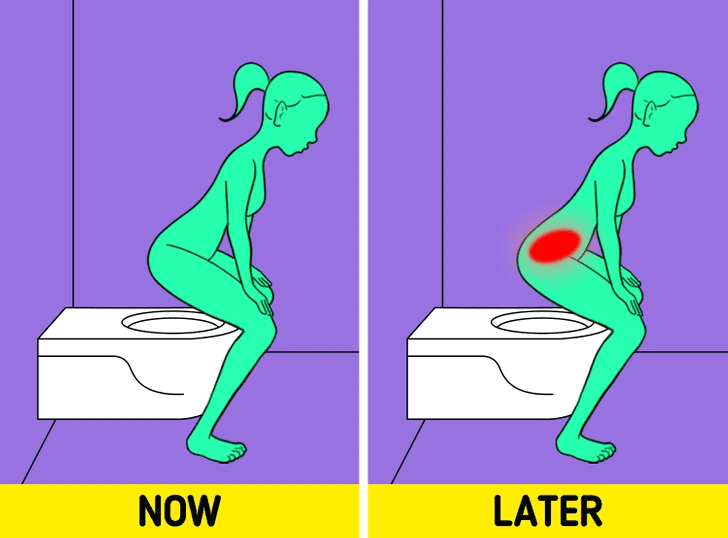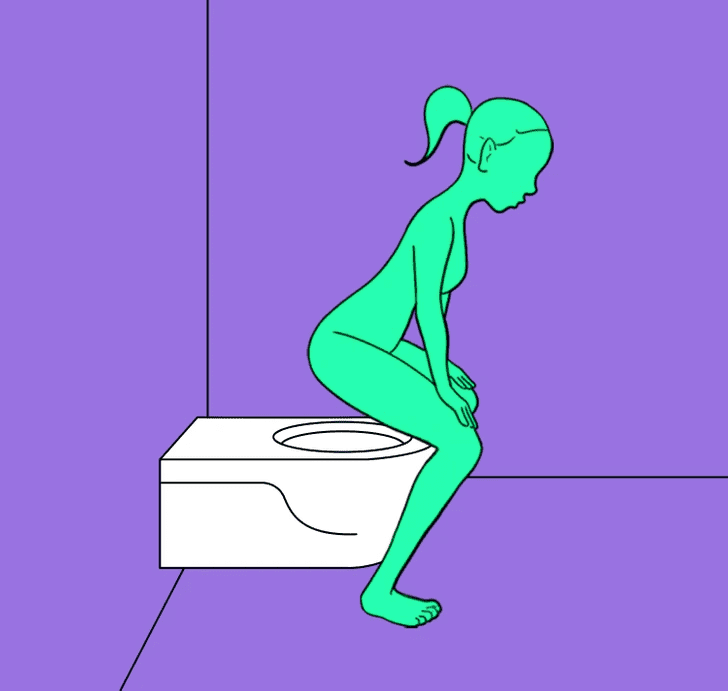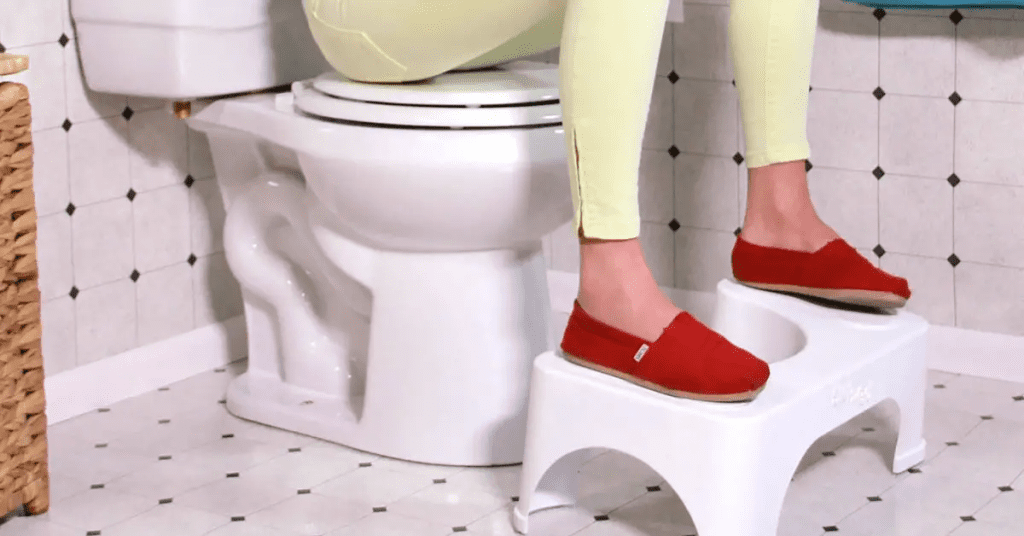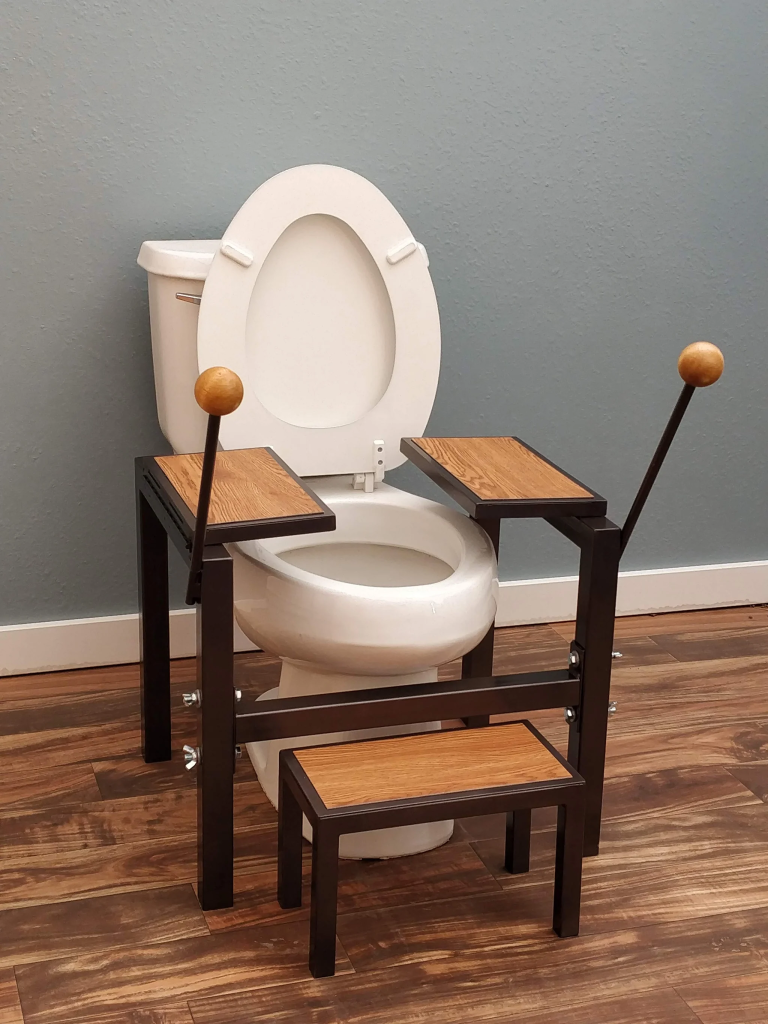Public restrooms often feel like a battleground against germs, leading many people to squat over the toilet rather than sit directly on the seat. While this may seem like a logical way to avoid bacteria, it could be doing more harm than good. Squatting over a toilet forces the body into an unnatural position, impacting bladder health, pelvic muscles, and overall well-being.

The Impact on Bladder and Pelvic Health
Squatting over the toilet may feel like a smart hygiene choice, but it actually disrupts your natural urination process. This position prevents your pelvic floor muscles from fully relaxing, leading to incomplete bladder emptying, irritation, and potential long-term issues.
Your Bladder Might Not Fully Empty
When you squat instead of sitting, your pelvic floor muscles remain tense, making it harder for your bladder to release all the urine. This means that some residual urine stays inside, creating a breeding ground for bacteria and increasing the risk of urinary tract infections (UTIs).
Video: Squatty Potty – toilet stool: How toilet posture affects your health
You May Experience Frequent Urges to Urinate
If your bladder doesn’t fully empty, it can trick your body into thinking you need to go again soon after urinating. This false sense of urgency can be frustrating and disrupt daily life. Over time, bladder irritation and inflammation can develop, causing discomfort and unpredictable urges to pee.
Weakening Your Bladder Over Time

Constantly squatting over the toilet can lead to long-term damage. Your body learns to keep muscles tense instead of fully relaxing when urinating. This improper muscle training can contribute to weaker bladder control, increasing the risk of leakage and urinary retention as you age.
The Right Way to Squat: Full Squat vs. Half Squat

If you absolutely must avoid sitting on a public toilet, the way you squat matters.
The Semi-Squat (Hovering) Does More Harm Than Good
Many people choose to hover just above the toilet seat, thinking it’s the best way to stay clean. However, this semi-squat position keeps the bladder and pelvic floor partially engaged, increasing the risk of:
Video: Should You Sit or Squat to Use the Bathroom?
- Incomplete bladder emptying
- Pelvic muscle strain
- Long-term bladder dysfunction
The Full Squat Is a Better Alternative

A full squat—where you lower yourself completely as seen with traditional squat toilets—is actually better for bladder health. In this position, the pelvic floor fully relaxes, allowing the bladder to empty properly.
However, this method isn’t practical or comfortable for most modern toilets, and the best long-term solution remains sitting down properly whenever possible.
The Psychological Barrier: Fear of Germs
One of the main reasons people squat over toilets is germophobia. But how dirty are public toilet seats, really?
Are Toilet Seats as Dirty as We Think?
Surprisingly, research suggests that toilet seats aren’t as bacteria-ridden as people assume. Unlike door handles or faucets, toilet seats don’t harbor as many harmful germs because they’re a dry surface.
Additionally, the skin on your thighs acts as a natural barrier, and unless you have an open wound, the risk of infection from sitting on a toilet seat is extremely low.
Ways to Reduce Contact Without Squatting

If you’re still uncomfortable sitting on a public toilet seat, here are some hygienic alternatives:
- Use toilet seat covers or place toilet paper on the seat for a protective layer.
- Wipe the seat with a disinfectant wipe before sitting.
- Carry a sanitizing spray to clean the surface before use.
Additional Health Risks of Squatting Over the Toilet
Besides weakening bladder muscles, squatting can lead to other unexpected health problems.
Increased Risk of Constipation
When your pelvic floor muscles remain tense, it doesn’t just affect urination—it can also make bowel movements difficult. Over time, this can contribute to:
- Chronic constipation
- Straining during bowel movements
- Hemorrhoids
- Pelvic organ prolapse
Higher Risk of Urinary Retention and Infections
When urine remains in the bladder too often, the risk of urinary retention increases. This can lead to:
- Bladder infections due to bacteria buildup
- Bladder stones from stagnant urine
- Kidney problems in severe cases
Breaking the Habit: How to Train Yourself to Sit
If you’ve been squatting over toilets for years, you might wonder how to break the habit. Here’s how to transition back to a healthier, bladder-friendly approach:
1. Remind Yourself That Toilet Seats Aren’t That Dirty

Most infections don’t come from sitting on toilet seats—they spread through hands and direct contact with contaminated surfaces. Washing your hands is far more important than avoiding the seat.
2. Use Seat Covers or Sanitizing Wipes
If the idea of sitting directly on a public toilet still makes you uneasy, keep toilet seat covers or disinfectant wipes handy. This provides a psychological and physical barrier without compromising your bladder health.
3. Strengthen Your Pelvic Floor with Kegel Exercises
If you’ve been squatting for years, your pelvic floor muscles may have become too tense. Practicing Kegel exercises can help retrain your bladder and improve control over urination.
4. Give Yourself Time to Adjust
Breaking a long-standing habit takes time. Start by sitting down whenever possible, and use hygiene precautions if needed. Over time, your body will thank you for it.
Conclusion: Sit Down for Better Bladder Health
While hovering over a toilet seat may feel like a smart hygiene choice, it actually does more harm than good. The tension placed on your pelvic floor muscles can lead to:
- Incomplete urination
- Increased urgency to pee
- Long-term bladder dysfunction
- Constipation and other pelvic health issues
Instead of squatting, take precautions like using toilet seat covers or disinfecting wipes, but sit down when you go. Your bladder, pelvic floor, and overall well-being will be much healthier in the long run.
If you’ve been a chronic squatter, it might be time to rethink your approach—your body will thank you for it!


